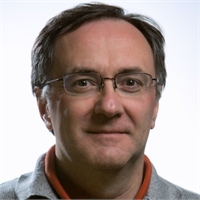Seminars
Thu |
Center for Semiconductor Modeling (CSM) - Accelerating Technology Development through Understanding Fundamental and Technology Limitations in Optoelectronics Materials and DevicesProf. Enrico Bellotti, Boston University, Boston, MA | |
|
Abstract: Timely technology transition with minimal risk requires an understanding of fundamental and technology limitations of material synthesis, device operation and design controllable parameters, i.e. can we build what we design? However, this knowledge-based approach requires substantial investment of resources in the Science and Technology (S&T) stage of development. For low volume niche semiconductor technologies of Department of Defense (DoD) relevance, industry alone cannot justify these investments simply because there is no significant return on investment. As a result, technology transition from S&T to product development is often expensive, delayed, and carries risks. To address these problems, the Army Research Laboratory (ARL) has established a Center for Semiconductor Modeling of Materials and Devices (CSM) that brings together government, academia, and industry in a collaborative fashion to continuously advance semiconductor research forward to meet DoD needs. The CSM leverages the combined core competencies of partner organizations, which include a broad knowledge base in modeling, and its validation; sharing of computational, characterization, materials growth and device processing resources; project continuity; and ‘extension of the bench’ via exchange of researchers between affiliated entities. A critical DoD technology is sensing in the infrared (IR) spectrum, where understanding of materials, devices and methods for sensing and processing IR information must continually improve to maintain superiority in combat. In this presentation we discuss the evolution of IR technology and emphasize the need for understanding of material properties and device operation to accelerate innovation and shorten the cycle time, thereby ensuring timely transition of technology to product development and manufacturing. Details regarding the CSM structure and ongoing research projects focused on IR detectors, especially Type II Superlattices (T2SL), will be discussed. A goal of the CSM is to develop physics based models that predict system performance (correlating material properties to system metrics) with the capability to timely understand the knowledge gap between what is built and what is designed. Biography: Enrico Bellotti received the “Laurea in Ingegneria Elettronica” degree from the Politecnico di Milano, Milano, Italy, in 1989, and the Ph.D. degree in electrical engineering from the Georgia Institute of Technology, Atlanta, USA, in 1999. He has been with the Department of Electrical and Computer Engineering, Boston University since 2000, initially as an Assistant Professor from 2000 to 2006 then with the rank of an Associate Professor from 2000 to 2012, and a Professor since 2013. He has over 20-year experience in the area of computational electronics. He has developed high performance simulation codes to study carrier transport in a variety of semiconductor material systems and related devices. He has authored over 100 journal papers, 90 conference papers, and 4 book chapters. He is the holder of three U.S. patents. He has performed research in the area of UV optoelectronics, IR photodetector arrays, III-nitride materials and devices, oxide materials and devices, and germanium-based compounds and related devices. He was a recipient of the 2003 ONR Young Investigator Program Award and the 2005 NSF CAREER Award. He is currently the Director of the Center for Semiconductor Modeling of Materials and Devices (CSM) Consortium led by the U.S. Army CCDC Army Research Laboratory (ARL) and the CoPI of the ARL MSME CRA. Location: MIT Lincoln Laboratory Forbes Road |
